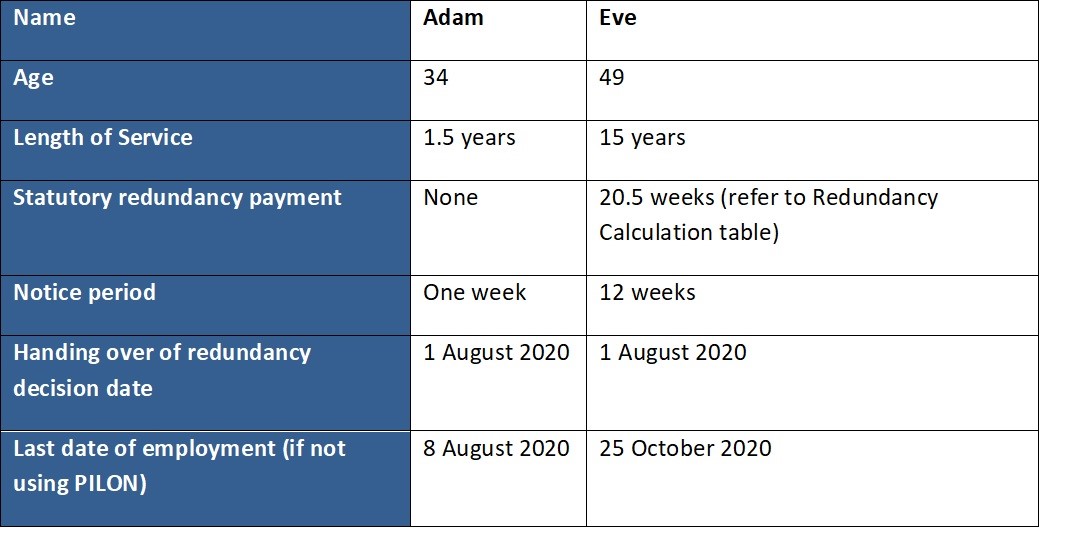Explained: If a Company Goes Bust Who Pays Redundancy in the UK?
Explained: If a Company Goes Bust Who Pays Redundancy in the UK?
Blog Article
Checking Out the Interplay In Between Company Redundancy and Business Flexibility for Future Growth
In the dynamic landscape these days's business globe, the elaborate partnership between firm redundancy and organizational versatility becomes a crucial aspect for sustained development and success. Firms typically face the difficulty of striking a delicate balance in between keeping a level of redundancy to minimize risks and promoting flexibility to react swiftly to the ever-evolving market demands. This fragile interaction holds the essential to not just surviving in rough times yet also growing in the face of uncertainty. As we discover the complex dimensions of this interplay, fascinating understandings into exactly how companies browse these complexities to pave the method for future development wait for.
Relevance of Firm Redundancy
Firm redundancy is an important aspect that improves organizational durability and reduces operational risks. By incorporating redundancy steps within the organizational framework, companies can much better hold up against unexpected disruptions and fluctuations in the company environment. Redundancy works as a calculated buffer, allowing companies to adjust and react successfully to unforeseen challenges without compromising important operations.
One key facet of the value of business redundancy is its role in making certain connection throughout times of crisis. When confronted with sudden adjustments or emergency situations, repetitive systems, resources, or workers can action in to keep critical features and avoid widespread disturbances. This connection not only safeguards the company's reputation and consumer depend on but additionally reduces financial losses and functional downtime.

Strategies for Organizational Flexibility

Producing adaptable business frameworks that enable for fast changes to market dynamics and customer demands is vital for staying affordable in a quickly advancing environment. By proactively identifying potential interruptions and opportunities, companies can proactively adjust and prosper in an ever-changing organization landscape.
Balancing Redundancy and Versatility
Accomplishing an unified balance between functional redundancy and organizational flexibility is extremely important in navigating the complexities of a vibrant organization environment. go Striking the appropriate balance between redundancy and flexibility is a fragile process that calls for a deep understanding of the company's objectives, industry dynamics, and risk tolerance.
To accomplish this balance, firms require to perform routine evaluations of their operations to identify areas where redundancy is required for threat mitigation and where flexibility can drive development and growth. Applying flexible structures, fostering a society of constant discovering and renovation, and motivating open interaction throughout all degrees of the company are essential methods to integrate redundancy and adaptability efficiently. By aligning these 2 critical components, firms can place themselves for lasting growth and success in an ever-changing business landscape.
Study on Adjustment Success
In taking a look at circumstances of effective business adaptation, it becomes noticeable that the interaction between functional redundancy and versatility is a specifying variable in forming resilient businesses. One engaging case research is that of Netflix. At first a DVD rental service, Netflix showed amazing adaptability by transitioning right into a streaming platform when digitalization interfered with the market. By tactically buying innovation and content development, Netflix not only endured but grew in a swiftly progressing market. Another standout instance is Amazon. Beginning as an on the internet book shop, Amazon constantly adjusted its business design, expanding into varied sectors such as cloud computer and artificial intelligence. This flexibility enabled Amazon to remain ahead of rivals and fulfill changing consumer needs. Lastly, Adobe offers a significant illustration of successful adjustment. The company shifted from offering software licenses to a subscription-based model, making certain reoccuring earnings streams and improved consumer interaction. These study highlight the relevance of functional redundancy paired with organizational flexibility in fostering long-term growth and competitiveness.
Structure Strength for Future Development
Building resilience for future development needs a strategic positioning of operational procedures with market dynamics and arising trends. Firms should adjust to changing settings by promoting a society of versatility, innovation, and constant improvement.
Additionally, fostering strong partnerships with stakeholders, such as clients, staff members, providers, and the area, is vital for preserving and weathering uncertainties trust fund and support throughout stormy times. Effective interaction and openness play an important function in structure resilience, as they assist straighten expectations and promote collaboration in navigating uncertainties.
Moreover, companies need to prioritize knowing and growth campaigns to upskill workers and outfit them with the essential tools to adapt to altering scenarios. By buying their news labor force, firms can enhance their adaptability and agility, ultimately enhancing their durability for lasting future growth.
Conclusion

In the vibrant landscape of today's business globe, the detailed relationship in between firm redundancy and business flexibility emerges as a vital factor for sustained development and success. Firms frequently deal with the obstacle of striking a delicate balance between keeping a degree of redundancy to mitigate risks and fostering versatility to react promptly to the ever-evolving market needs.To achieve this balance, business require to perform normal assessments of their operations to identify areas where redundancy is needed for threat mitigation and where flexibility can drive innovation and development.In final thought, the interaction in between firm redundancy and business flexibility is crucial for future growth. Building resilience through a combination of redundancy and adaptability will make certain that firms are prepared for the obstacles of the future.
Report this page